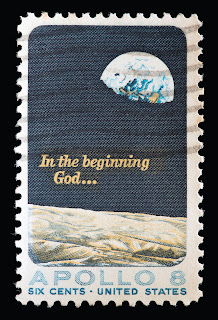Meet George Jetson: Successful people envision the future–not just adapt to it
by Dr. Anthony Paustian
Author of A Quarter Million Steps
I grew up watching the The Jetsons, a futuristic television cartoon created by Hanna and Barbara in the early 1960s. As George Jetson and his family traveled around in flying vehicles while living and working in buildings that seemed to float in the sky, it was easy to think that anything representing a total paradigm shift from current life had to be light years into the future.
Author of A Quarter Million Steps
I grew up watching the The Jetsons, a futuristic television cartoon created by Hanna and Barbara in the early 1960s. As George Jetson and his family traveled around in flying vehicles while living and working in buildings that seemed to float in the sky, it was easy to think that anything representing a total paradigm shift from current life had to be light years into the future.
However, I recently attended the
Experimental Aircraft Association’s annual AirVenture in Oshkosh, Wisconsin. The
largest air show in the country, AirVenture was loaded with state-of-the-art
military and civilian aircraft and even modern, private sector rockets such as
Jeff Bezo’s Blue Origin. But it was the smaller, more experimental aircraft
that fascinated me. Despite my Air Force years on fighters (F-111s to be
specific - now appearing in museums), I found myself repeatedly drawn to these
very personal flying machines the entire week I was there.
The options were many, ranging from
flying cars to personal transport drones. On the one end was the two-seat Switchblade.
Classified as a flying sports car (its wings automatically folded in and out
from the bottom of the car like a pocket knife), this amazing car/plane can
reach ground speeds of 100 mph, a top air speed of 190 mph, and has a range of
450 miles.1 Then there was the two-seat Pal-V, a
car/helicopter. Unlike the Switchblade and a bit slower, this vehicle doesn’t
require a runway and can drive and/or take off from virtually any location.
However, the personal flying machine
that truly amazed me was the all-electric drone developed by EHANG (listed as
one of the Most Innovative Companies of 2016 by Fast Company). About the
size of a Volkswagon Beetle, this flying machine eliminated the most dangerous
element of transportation––driver/pilot error. Controlled by a fail-safe autopilot
and ground-based flight control center, the “rider” simply climbs in, sets
their destination on the touchscreen (kind of like tapping on a location in
Google Maps), and taps GO. The drone does all of the work, carrying the
passenger from point A to B using the fastest and safest route.
Now think back thirty years ago to the
year 1987 (or imagine it, if you were born after). A gallon of gas cost 89¢,
and the price of a new Honda Civic was just over $6000.2 The first
successful email sent from China was received by its desired recipient in
Germany,3 and there were a third less people in the world.4
Web browsers like Google didn’t exist so you couldn’t surf or really do
anything on the Internet, a cell phone sold for thousands of dollars, required
a large carrying bag, and ONLY allowed you to make a call (and in only very
limited areas in the country),5 and there was no GPS in your car
telling you where to go.
Whether we realize it or not, we’ve
been adapting to huge paradigm shifts throughout our entire lives, whether it’s
gas-powered automobiles transitioning to all electric, self-parking, or even
self-driving cars; rotary dial telephones evolving into smartphones with more
computing power than the sum total of all computers that sent men to the Moon;
and storefront, face-to-face retail shopping slowly giving way to online
shopping––while those who still shop in person use smartphones instead of cash
to pay for their merchandise.
While personal flying/driving machines
are still nowhere near mainstream adoption, I can’t help but wonder what life
will be like thirty years from now in 2047.
And then there are the people who lead
the paradigm shifts. Gene Roddenberry was able to imagine a future in Star
Trek totally different from what was considered normal in the 1960s. That
vision of the 23rd century inspired a generation of kids to imagine and create,
and now we use many of those imagined 23rd century innovations today. Steve
Jobs pictured a world where everyone had a personal computer, and now we all
have one, either in our pockets or on our wrists (or both). John F. Kennedy
envisioned Americans walking on the Moon, which resulted in the development of
thousands of new innovative products we all take for granted every day.
Change happens, and its impact is inevitable.
What separates the successful leader and entrepreneur is his or her ability to
imagine, envision, and be open to a future that’s different from today…and not
just adapt to it as it happens.
Who knows, today’s “concept” of automobiles
may no longer exist in thirty years. Someone like a Gene Roddenberry, Steve
Jobs, or John F. Kennedy may lead a shift in paradigm, and we could all be
flying around in our own personal flying machines to our homes in the sky…just
like in The Jetsons.
©2017 Anthony D. Paustian
1.
Retrieved September 10. 2017, from the Samson Motorworks website: http://www.samsonmotorworks.com/switchblade
2.
The Year 1987 from The People History. Retrieved August 11, 2017, from The
People History website: http://www.thepeoplehistory.com/1987.html
3.
Computer History - 1987. Retrieved August 11, 2017, from the Computer Hope
website: https://www.computerhope.com/history/1987.htmworld
4.
World Population Clock. Retrieved September 19. 2017, from the Worldometers
website: http://www.worldometers.info/world-population
5.
Sims, Calvin. Mobile Telephones for All
Occasions. (Spetember 23, 1987) Retrieved September 19. 2017, from the New York Times website: http://www.nytimes.com/1987/09/23/business/mobile-telephones-for-all-occasions.html?pagewanted=all&mcubz=0




Comments
Post a Comment